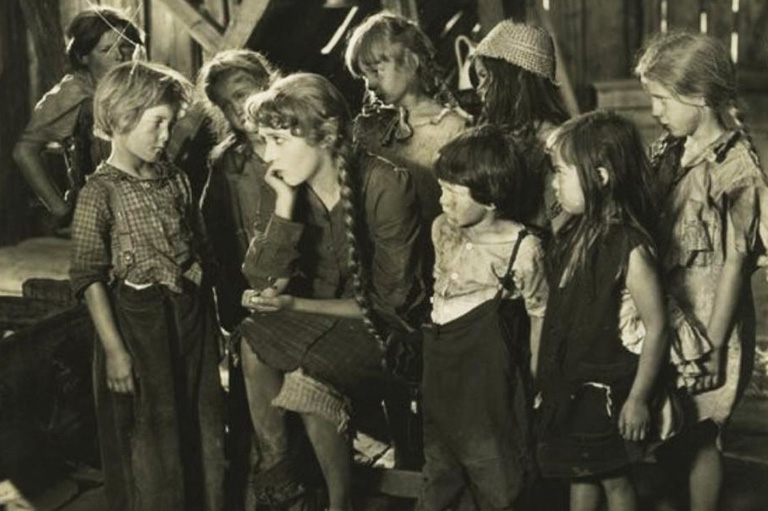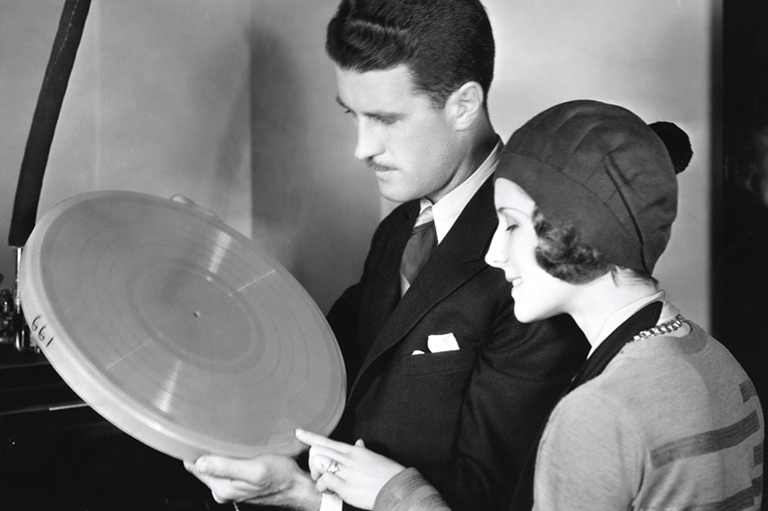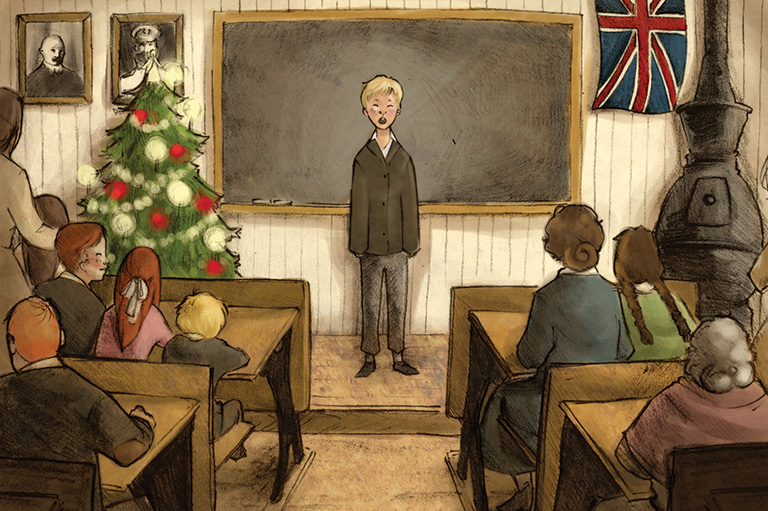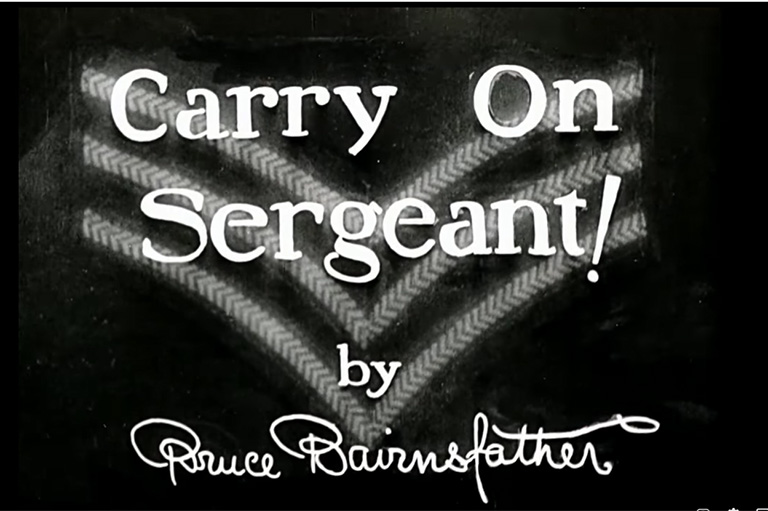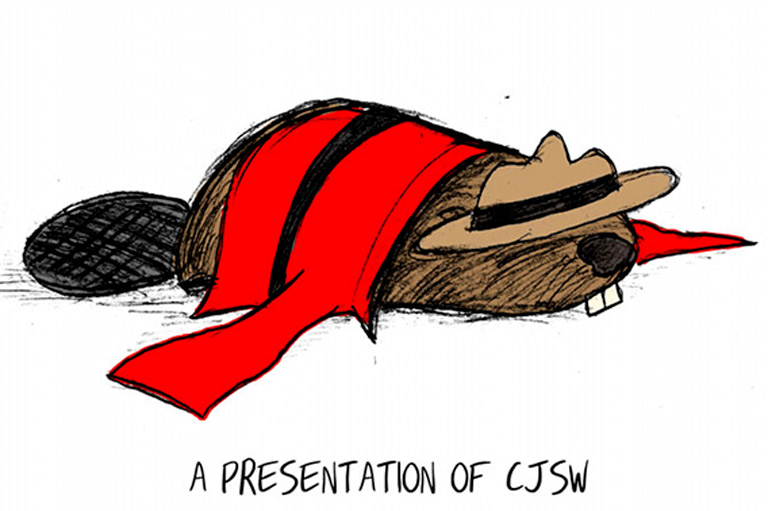The Railrodder
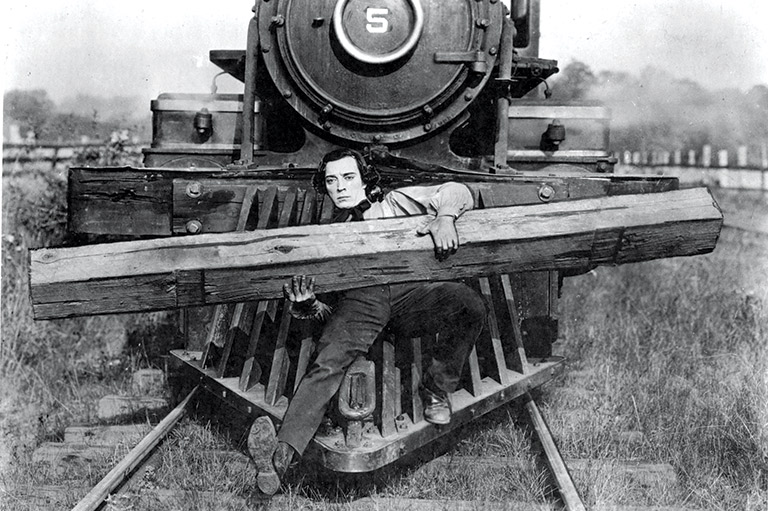
It could have been Canada’s centennial year, 1967. It could have been ’68 or maybe ’69 when I first saw it. I know it was on the big screen of a theatre on Danforth Avenue in Toronto. It would have been a Saturday matinee, but I’m not sure for which film my friends and I, a pack of grade-school brats, had grabbed tickets — was it Bonnie and Clyde, In the Heat of the Night, or maybe a third or fourth run of The Great Escape? As ever, my friends and I would have been impatient for the curtain to be raised and for the main feature to begin, all the more impatient when a short film was screened while stragglers took their velvet seats.
The short in question opened with a shot of the face of Big Ben and the sound of a train rolling out of a station. Then the credits appeared: The National Film Board of Canada Presents: Buster Keaton in The Railrodder. The camera pulled back to show a bridge over the River Thames. It was puzzling — a Canadian film, in England, with a title and sound that suggested a train, yet not one in sight.
After the establishing shot, a tired-looking old man in a straw hat and a loud red vest appeared onscreen, sitting with his back to a London street scene, reading the Sunday Times. From his point of view, we saw a full-page ad in the paper, consisting of three words: SEE CANADA NOW. And then, as if in the old man’s imagination, came a montage of action clips — lumberjacks felling trees, buffalo stampeding, moose roaming, Indigenous people dancing around a fire in a traditional ceremony, Mounties in full dress riding in formation. Then at a distance we saw the man jump off a bridge into the Thames and for a moment vanish, unexplained, seemingly inexplicable.
It’s been more than five decades since that day, and I’ve forgotten many of the details, but what I do remember, vividly, is my reaction to that short film. And my reaction was: What the heck is this?
(Editor’s note: You can watch The Railrodder at the end of this article.)
Founded in 1939, the National Film Board (NFB) has produced thousands of short films. NFB shorts have won eleven Oscars in the live-action, documentary, and animation categories. The Railrodder, the short film that I watched that day long ago, did not win an Oscar, nor was it one of the dozens of NFB shorts to be nominated for an Academy Award, yet it stands in a class of its own in the board’s vast library.
Ambitious and yet pretension-free, The Railrodder is Canada’s link to one of the titans of the silent-film era, Buster Keaton. In fact, the film isn’t simply a vehicle for Keaton but a loving tribute and homage all at once — with a contract that, after some negotiation, secured his services for the princely sum of $5,000 and a duck.
With 7 uniquely curated newsletters to choose from, we have something for everyone.
Buster Keaton is universally regarded as one of the three comic giants of the silent-film era, alongside Charlie Chaplin and Harold Lloyd. Keaton was the son of vaudeville entertainers who performed with the legendary escape artist Harry Houdini — his parents were on tour in the autumn of 1895 when his mother went into labour in Piqua, Kansas. Before the young Keaton could walk, he worked his way into the family’s act — he crawled out of a suitcase that doubled as a crib and made his way onto the stage in the middle of a show.
Keaton broke into the film game as a bit player in Roscoe (Fatty) Arbuckle movies but managed to steal scenes from the star, not by hamming it up but rather by doing the exact opposite. Keaton was the deadest of deadpan comics — no matter how circumstances around him spun out of control, Keaton’s expression never seemed to change, staying in the default mode of mournful resignation and existential dread. He earned the nickname the Great Stone Face. Influential film critic Roger Ebert explained: “[Keaton] kept his composure in the centre of chaos. Other silent actors might mug to get a point across, but Keaton remained observant and collected. That’s one reason his best movies have aged better than those of his rival, Charlie Chaplin. He seems like a modern visitor to the world of the silent clowns.” Other Keaton trademarks included physical comedy and breathtakingly terrifying stunts of his own design. In the most famous of them, a scene in Steamboat Bill, Jr., Keaton stood stock still on his mark, stroking his chin, while the facade of a two-story house fell on him, or at least around him — he was spared certain death only because a tall window frame on the top floor passed over his body.
The American Film Institute (AFI) ranked Keaton as number twenty-one on its list of the greatest American male movie stars of all time, and Keaton’s greatest film, The General, was number eighteen on the AFI’s 2007 ranking of the greatest American movies of all time.
A Civil War action-comedy, epic in scale, with an enormous budget of $750,000 and five hundred extras for battle scenes, The General was the story of Johnnie Gray, a young locomotive engineer, whose love is divided between his fiancée and his train, the eponymous General. To win the girl’s affection, he tries to enlist in the Confederate Army but is shamed when he is rejected, his work on the railway being considered far too valuable to be forsaken for mere soldiering. When Union spies steal the General and head north, Johnnie goes behind enemy lines and brings his train safely home, after chase scenes that have never been matched in a century of film. As Johnnie, Keaton performed all his own stunts, which made a building falling on him seem no more dangerous than a simple pratfall.
The famous director Orson Welles called the film “a masterpiece.” Yet The General received less than favourable reviews upon its release, with critics suggesting the film was insensitive in its treatment of the Civil War. Worse for Keaton, the film performed poorly at the box office. His star in Hollywood fell precipitously, and his career faded to black when silent movies gave way to the talkies.
The General played a significant role in Gerald Potterton — the director of The Railrodder — falling in love with the movies in the days before the Second World War. “I remember watching Buster’s movies — it would have been about 1938, 1939 in south London, where I grew up, at the Odeon,” said Potterton, interviewed at the age of ninety-one at his long-time home in Quebec’s Eastern Townships. “They had a Saturday-morning kid show with Laurel and Hardy and Charlie Chaplin and Buster. I howled with laughter with Laurel and Hardy, but with Buster I was more amazed by his antics in The General and and his shorts.”
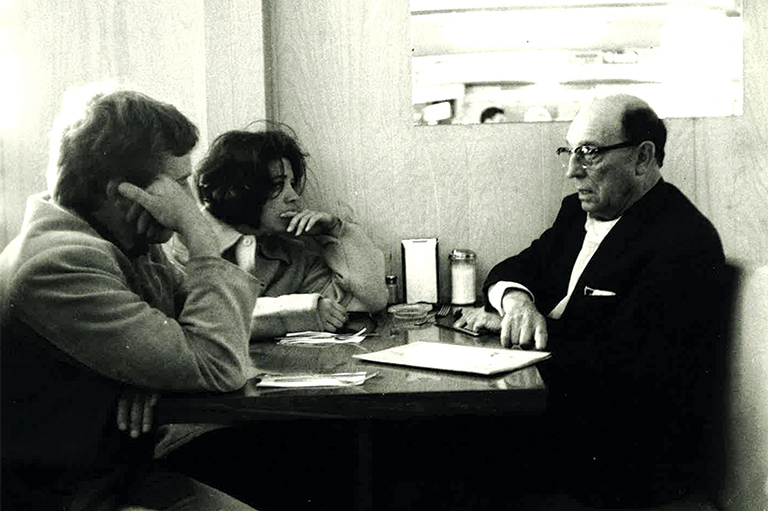
Potterton’s love of movies led to a career in the film business, first in England and by the early 1960s with the NFB. He worked in both live action and animation. In the spring of 1964, his star was rising — he had received an Academy Award nomination for his animated short My Financial Career, an adaptation of a Stephen Leacock story. According to Potterton, The Railrodder was spawned not by an artistic vision but rather by simple bookkeeping.
“A lot of things have to fall into place for a film to get made, but with The Railrodder the key thing was money left over in the budget at the [financial] year’s end,” he said. “If it weren’t for that, the film would never have happened.”
Potterton had in mind a film project with a train theme, something along the lines of London to Brighton in Four Minutes, a BBC short using speeded-up footage of an eighty-two kilometre trip between the two cities, shot from an engineer’s point of view.
On a drive to the NFB’s office in Montreal, he saw a railway bridge and a worker in a construction helmet zooming across it in a motorized cart called a speeder, or draisine. “I had been thinking about a film about going across by the country and then [after seeing the speeder] thought: What a way to do it!”
Potterton doesn’t remember who originally floated the idea of casting Buster Keaton in the lead role. But he remembers being puzzled when the silent-film legend’s name came up in a meeting of the NFB’s animation department. “I said, ‘He’s dead, isn’t he?’ I really had no idea.”
Wolf Koenig, a shining light in the NFB’s stable of filmmakers, mentioned that he had just seen Keaton in a bit role in the 1963 big-budget Hollywood farce It’s a Mad, Mad, Mad, Mad World. Unbeknownst to Potterton, interest in Keaton was slowly coming back. Keaton had made millions at his peak in the early days of Hollywood and, in a standard show-business storyline, his reputation and fortune had vanished as quickly as it came. In the 1930s and 1940s, an embittered Keaton had drowned his sorrows in alcohol and had been reduced to working on screenplays as a writer without credit, coming up with laugh-generating gags for the other comedians like the Marx Brothers, Lucille Ball, and Red Skelton. Occasionally he found walk-on parts in B movies. In the early 1950s, he did manage to steal scenes in a couple of cameo roles that drew conspicuously from his life story: a near-blind vaudevillian comic opposite Charlie Chaplin in Limelight; and one of a trio of washed-up silent-film stars playing bridge with leading lady Gloria Swanson as Norma Desmond in Sunset Boulevard. (His only line of dialogue was a single word: “Pass.”)
Save as much as 40% off the cover price! 4 issues per year as low as $29.95. Available in print and digital. Tariff-exempt!
“His appearances in pictures such as Limelight … served to convince an increasing large number of people that Keaton was a living legend,” Tom Dardis wrote in his 1995 biography Keaton: The Man who Wouldn’t Lie Down.
Many of Keaton’s supporters in Hollywood rescued his films from certain extinction — their silver nitrate gave them a shelf life of forty years, and even by the late 1950s many had deteriorated to the point that some reels couldn’t be salvaged. Those who restored his films and made them available to new generations of fans doubtlessly influenced the members of the Motion Picture Academy who presented him with an honorary Oscar in the spring of 1960.
In the wake of the Academy Awards, Keaton starred in a memorable episode of the television show The Twilight Zone, fittingly as an inventor circa 1890 whose time-travel contraption landed him in the year 1961, where mayhem ensued. He took on bit parts in campy teen comedies like Beach Blanket Bingo. He also landed dozens of commercials, including a role as the sidekick of Speedy, the animated character in Alka Seltzer commercials.
All of this is to say that Keaton wasn’t just alive but also available to work.
Potterton arranged to meet Keaton and his wife at the Essex Hotel in New York to discuss a proposed travel movie. He had typed up a two-page outline with the working title The Traveling Man: a nine-minute short. In conversation he refers to it as “the so-called script.”
It could have been a tough sell. This wasn’t a day shoot like Sunset Boulevard nor even a week in the studio like Limelight and The Twilight Zone. The demands on the actor, who was in failing health as he approached his sixty-ninth birthday, would be significant. As laid out in the outline, the suggested locations included Montreal, the backwoods of northern Ontario, the coast of the Great Lakes, the prairies, and finally the Rockies. Potterton told Keaton that the shoot would take five weeks. (It would, in fact, take six.) And he told Keaton that, with a $100,000 budget, he had set aside $5,000 for the star’s salary. While this might seem a puny sum, it was the same weekly rate that Chaplin had paid Keaton for Limelight.
Advertisement
Further, Potterton was competing with heavyweights for Keaton’s time. He had already booked work on a French film with a screenplay by the estimable Irish Modernist Samuel Beckett. Potterton had to appeal to Keaton’s artistic vision, his sense of symmetry and irony: This NFB short would be a return to the form that had established him as a star. In lieu of the noble General in the eponymous classic, Keaton would cross the country on an unnamed draisine.
Yet, as Potterton recalls, negotiations were easy and brief. “Buster said he’d do it if we got him a wild duck dinner during production,” he said. “I was sort of stunned by it. I thought it was a joke, but to him it wasn’t.” The duck wasn’t written into the contract, but Keaton was willing to take it on good faith.
Executives at the NFB recognized that several weeks of production and cross-country travel with Keaton presented them with a unique opportunity: a chance to document the legendary star in the late autumn of his life, at work on the film. Given the constraints of the production — Keaton and crew all rode on the same train — the filmmakers had not just a cooperative subject but in fact one who would be confined for the duration of the shoot.
The NFB had established a reputation for its intimate documentary portraits of artists at work. Most notably among them, Glenn Gould was the subject of two half-hour episodes of Candid Eye, CBC’s documentary series in the late 1950s. John Spotton was an all-purpose filmmaker — a producer, director, cinematographer, and editor — who had worked on several shorts for Candid Eye. When NFB executives gave the green light to Spotton for a documentary on Keaton to be shot behind the scenes during the filming of Potterton’s short, they were handing the assignment to a veteran with fifteen years of experience with the board. As it would turn out, Potterton’s film evoked Keaton’s silent films of the 1920s, and Spotton’s documentary, in tandem, anticipated the making-of features that would become standard stuff as DVD extras in the twenty-first century. Exactly what Spotton’s expectations were can only be a matter of conjecture — he drowned during a vacation to Cuba in 1991. Doubtless, though, he knew of Keaton’s reputation. As Dardis wrote in his biography: “Buster was a truly private person and none of his close friends claimed to know how he felt about anything except his work. The Great Stone Face was an enigma to all who knew him well.” Spotton’s task could have been a chase in vain, much like the Union soldiers’ pursuit of Johnnie Gray in The General. Many would have expected a study of a dour, bitter man whose career trajectory had crashed instead of soared. Or perhaps they’d have presumed that the documentary would reveal an impassive Keaton, incapable of emotion and laughter, as if his characters were a carry-over from the man himself.
For the simple reason of geography, Potterton’s film was shot in sequence, from east to west. “Everything had to be moving right to left,” he said. On the first day of shooting — the far right as it were — the director feared things might go wrong.
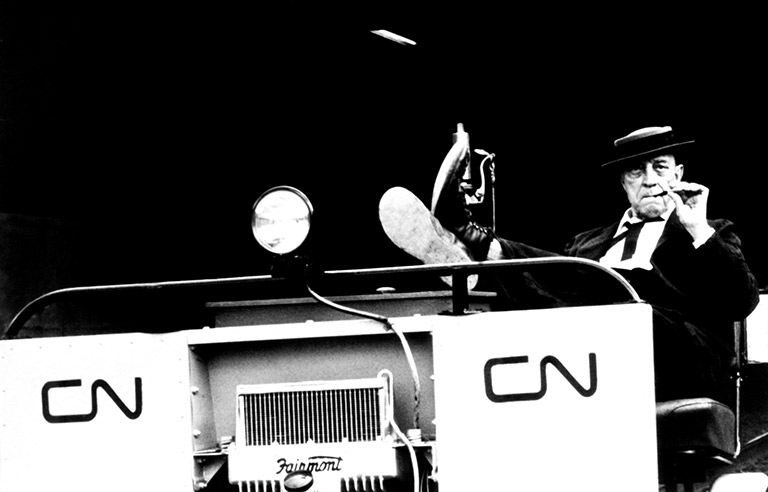
The first Canadian scene of The Railrodder is a memorable one: Keaton walks out of the surf onto the beach in Nova Scotia (after, presumably, having swum down the Thames River and across the Atlantic Ocean). The identity of the actor is clear — the camera on the beach was close enough to capture the Great Stone Face in detail. Unknown to viewers, though, is the time of year: Shooting commenced in October 1964. “The water had to be frigid,” Potterton said. “I offered him a stunt double, but he wanted nothing to do with it. He was determined to take it to the limits.” Despite his age and several past bouts of pneumonia, Keaton wasn’t about to compromise with a stunt man or the protection of a wet suit, not even when the scene required several takes while he and Potterton played with sight gags. Years earlier, Keaton had explained his willingness to take on daunting, even perilous, physical risks in five words: “Stunt doubles don’t get laughs.”
Potterton still marvels about that first day on location. “Buster was, in a funny kind of way, superhuman.” While worried that Keaton might be tempting hypothermia, Potterton also wondered if the star was going to be difficult to work with. One point of contention on the first day of shooting was whether Keaton should wear his trademark porkpie hat. “With Buster coming out of the water and onto the beach we tried a straw hat and then another kind of boater,” Potterton said. “Nothing worked so well as his old standby.”
There was also a dispute over seagull droppings.
“At one point I said, ‘Buster, there could be a poop sound and you look up and a seagull has pooped on you,” Potterton recalled. Keaton’s reply was succinct and withering: “We’ll leave those kinds of gags to Peter Sellers.”
Potterton’s fears of conflict were never realized, however. The film proved to be a happy collaboration between the young director and the showbiz ancient. “I learned a lot from Buster but most of all that I didn’t know that much,” Potterton said.
Keaton had lost much of his physical ability, but his creative instincts were intact, and his sense of professionalism was ever a point of pride. As he wrote in My Wonderful World of Slapstick, his slim autobiography, “I was the only MGM star who had never failed to show up for work on time. Unlike [others], I was never temperamental, never refused to do anything required of me, including the most hazardous stunts in my pictures.”
Potterton drew up storyboards of only a couple of scenes. “I was just winging it,” he said. “We really didn’t know what was going to happen the next day.” The sight gags ranged from the broad, such as pratfalls, to those so subtle that they might be missed, even after multiple viewings. The latter category includes a scene in New Brunswick where the speeder rolls to a stop, its gas tank empty — only sharpeyed fans will pick up, in the background, an oil refinery.
While The General leaned heavily on the courage and resourcefulness of Johnnie Gray, Keaton’s never-named character in The Railrodder remains either eerily calm or completely oblivious when disaster looms. In one sequence, the speeder careens down the track heading for what seems like a certain head-on collision with an engine coming from the opposite direction. Catastrophe is averted only when, at the last breath, Keaton bends down, flips a switch, and veers onto another track. The documentary reveals how the fear and suspense on the screen reflect the feelings experienced by the filmmakers themselves. “There were times I was really worried that he might get killed,” Potterton said.
Advertisement
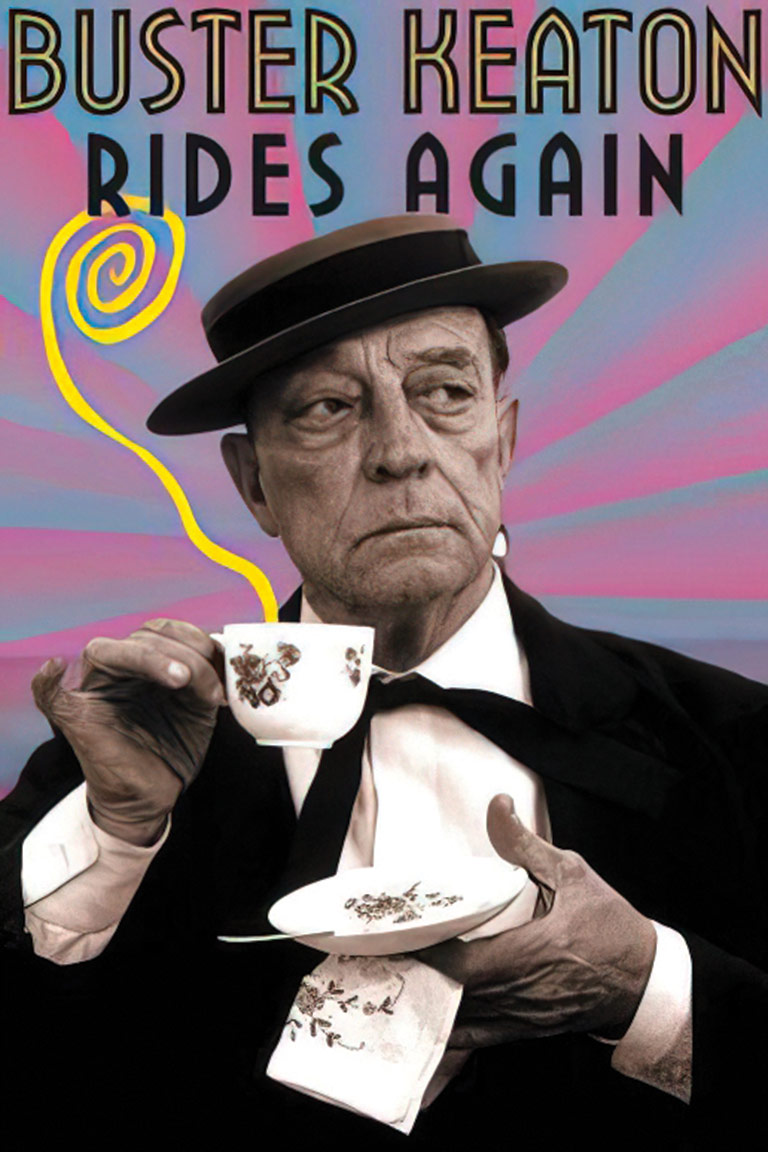
The documentary Buster Keaton Rides Again is deeply embedded, fly-on-the-wall stuff, capturing Keaton at work on The Railrodder, developing scenes and gags with Potterton, and behind the scenes on the train, dealing cards or strumming the ukulele and holding court with stories about bygone-era Hollywood. His shyness comes through when he’s out in public, when fans seek his autograph at a stop in Montreal, or when he is feted by the townspeople of Rivers, Manitoba, and greeted by their pipe band in full regalia. That shyness becomes full on dread when he takes questions at a press event, in part because his hearing loss frustrated him.
The documentary focuses on Keaton and his wife, Eleanor Keaton (née Norris), whom he married in 1940. Perhaps the most revealing aspect of the documentary is their relationship, in which she plays the roles of his compass and protector, sometimes outmatched. “He’s been insisting for the last three or four years he’s at least partially retired and intends to retire completely,” she tells the filmmaker. “And then the phone rings.”
The camera catches the baleful stone face — Keaton’s default expression — but it’s almost always at odds with his mood. In fact, he can barely contain his joy and amusement when an assistant cameraman boards the train at one stop with the promised duck, freshly felled and still warm. Keaton compliments the cameraman on his marksmanship, calling him “the hero of the day.”
The duck became a meal on the table and a prompt for a gag that was shot the next day. In it, a hungry Keaton converts the speeder into a moving, shrub-enclosed duck blind and takes aim with a shotgun at birds while he speeds down the rails. The blasts terrify nearby railway workers and send them running for their lives. Spotton’s film gives a glimpse into Keaton’s creative process — how he and Potterton sketched out the sequence on the fly — but also the tedium of filmmaking — waiting hours for the sky to clear. And in this case Buster Keaton Rides Again might outstrip The Railrodder for pure absurdity: The railway workers encountered and recruited en route were Italian immigrants who barely spoke a word of English, and their inability to follow Keaton’s directions added up to a scene of comedic miscommunication that could have come straight out of vaudeville.
More than the short film, the documentary has a wistful, bittersweet, or even tragicomic aspect. Throughout, Keaton’s physical struggles are obvious and perhaps to be expected, given the usual ravages of age and all the abuse that he put his body through with silent-film stunt work. His voice might always have been a croak, but his persistent cough is not a simple clearing of his throat or the product of a head cold. Eleanor Keaton speaks on film of her husband’s health struggles. “It was clear during the shoot that he wasn’t well, that a couple of times he coughed up blood,” Potterton said. “He didn’t let on and wasn’t about to complain or let it stop him.”
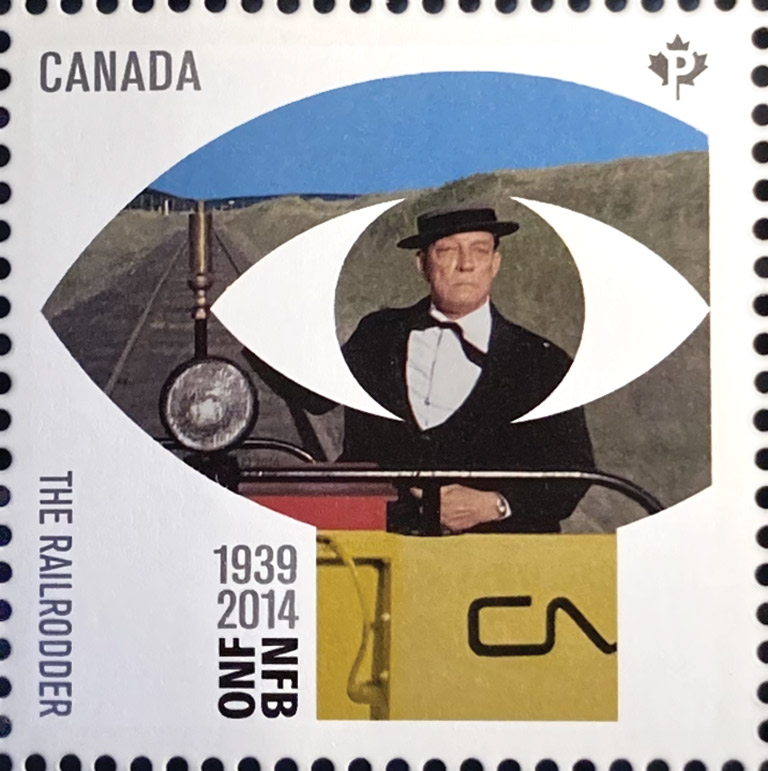
In fact, Buster Keaton Rides Again was really Buster Keaton’s last ride. He did a couple of small pieces of work in the wake of The Railrodder — including the flick with Beckett — but shut down completely in December 1965 and was soon after diagnosed with lung cancer. His health forced him to take his often-promised retirement.
The afterlife of The Railrodder has been one that neither the NFB nor Potterton could have expected. On its release critics were cool at best, many labelling its humour silly, broad, and anachronistic, as if slapstick had long passed its best-before date. “To that point NFB films had either been artistic or educational and not for entertainment purposes,” said Chris Seguin, a friend of Potterton and a member of the Damfinos, the international Buster Keaton appreciation society. Audiences, though, responded on a scale that neither the film board nor the director could have imagined. According to its records from 1965 to 1973, the NFB sold the television and film rights in forty-three international markets. Every continent was represented, save Antarctica. Over the last five years, The Railrodder has been viewed on YouTube by almost one million people.
As a living link to Keaton and the silent-film era, Potterton appears at the annual conventions of the Damfinos. “I remember a screening [of The Railrodder] in Poland that I was invited to a few years back,” he said. “A young fellow introduced himself and told me he had composed an entirely new soundtrack for it, and an orchestra played it during a screening. I’ve always been amazed by the reach of what was this little travel short that we did with the money left over in the budget.”
Today, Buster Keaton Rides Again connects audiences with a major artist in film history, while The Railrodder connects them with history of a different sort, namely that of Canada circa 1964. The ad in the Times said, “SEE CANADA NOW,” but the film is an opportunity to see Canada then. The swing bridge over the St. Lawrence River, the site of one of the film’s early gags, has been locked into place for decades now. Ottawa’s downtown Union Station closed just two years after Keaton’s train rolled through. The town of Rivers, Manitoba, was unincorporated in 2015 when it merged with another municipality. Buildings along the route have come down, while others have gone up. Predictably, the big-screen theatre where I saw The Railrodder is long gone. The natural landscape, though, is the constant, where then and now come together. NFB curator Albert Ohayon sums it up neatly: “Buster Keaton was the star of The Railrodder, but Canada was the co-star.”
We hope you will help us continue to share fascinating stories about Canada’s past.
We highlight our nation’s diverse past by telling stories that illuminate the people, places, and events that unite us as Canadians, and by making those stories accessible to everyone through our free online content.
Canada’s History is a registered charity that depends on contributions from readers like you to share inspiring and informative stories with students and citizens of all ages — award-winning stories written by Canada’s top historians, authors, journalists, and history enthusiasts.
Any amount helps, or better yet, start a monthly donation today. Your support makes all the difference. Thank you!
Themes associated with this article
Advertisement




